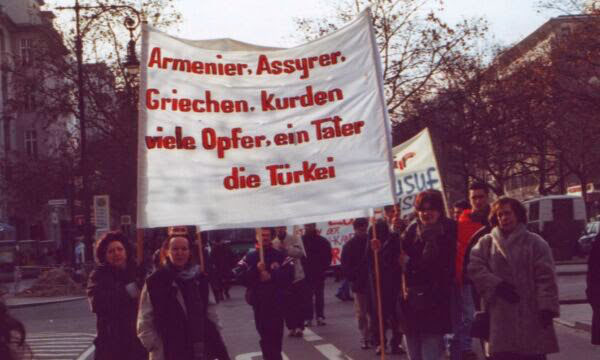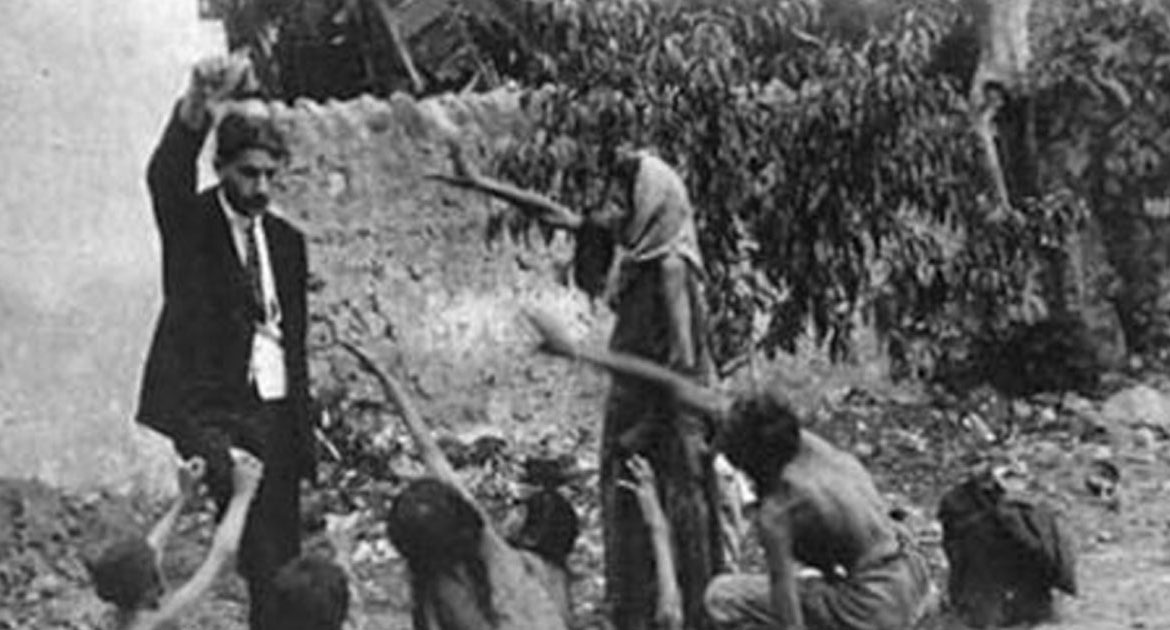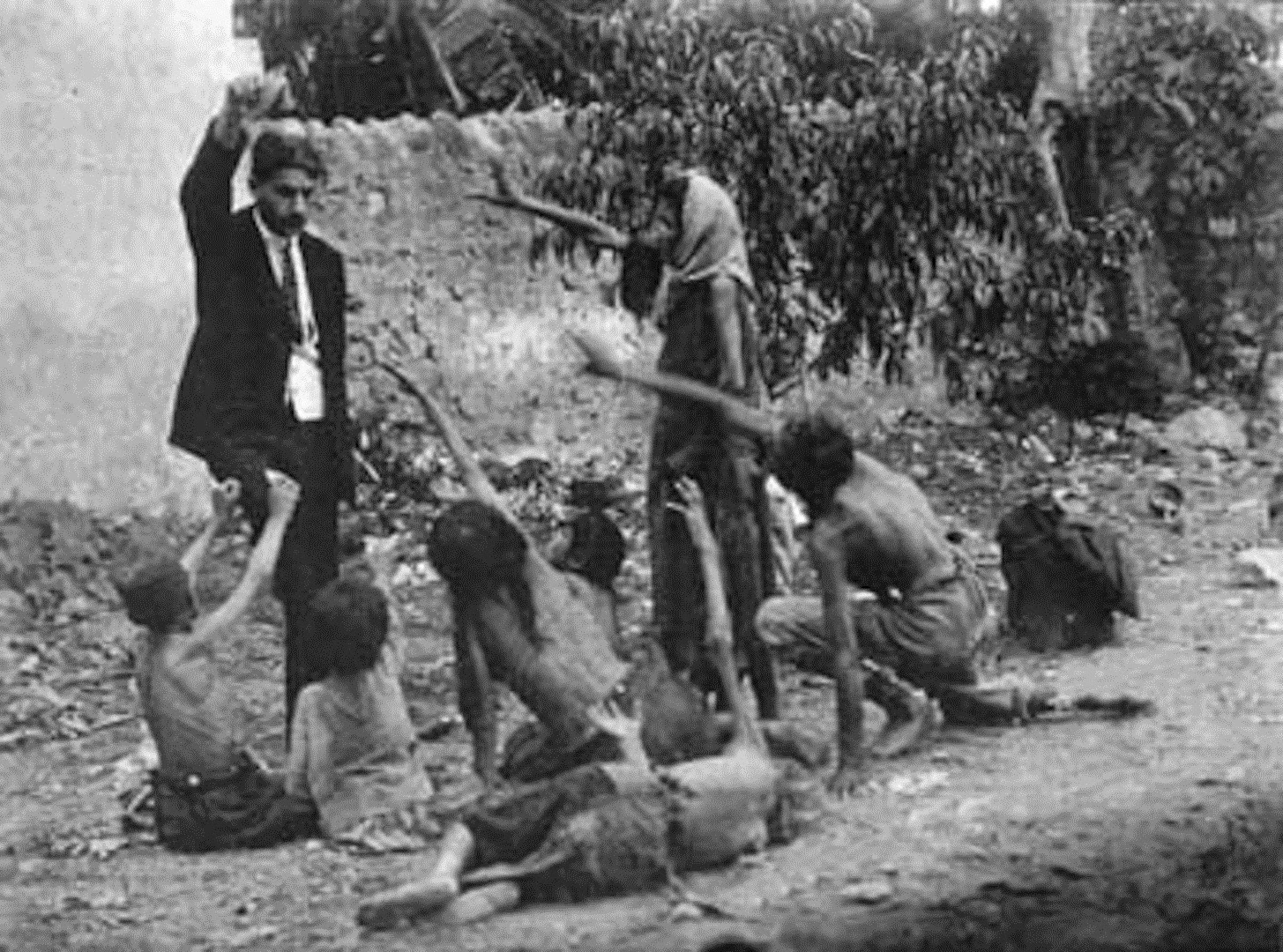
From the post-war years to today, the recognition of genocides became a huge issue. Demanding recognition of genocides, people actually demand the punishment of the perpetrators and instigators of these murders, as a first step of gaining justice against the crimes against humanity and against barbarity. However, many of such crimes haven’t been widely known as they should, mainly due to political reasons, but also because people have a wrong impression about what a genocide is.
The term «genocide» was formed at Nuremberg in 1945, in the trial for the crimes Nazi leaders had committed. Before this term was formed, there was another term for genocide, called «crimes against humanity». That explains why many people only bring in mind these crimes when they listen to the term «genocide». However, many forget or even ignore the genocides started much earlier. The very word «genocide» was created with the example of mass massacres in 1915 against the Armenians, the Assyrians and the Greeks of Minor Asia by the Ottoman Empire, right before its fall, later named Turkey.
The denial of a genocide is widely recognized as the final stage of the genocide itself, as it ensures and perpetuates impunity, paving the way for future crimes. So, the fact that many genocides were never recognized, should put us in thoughts as to what exactly is defined as a genocide and how to overcome the denial, an important issue about the future and the truth.
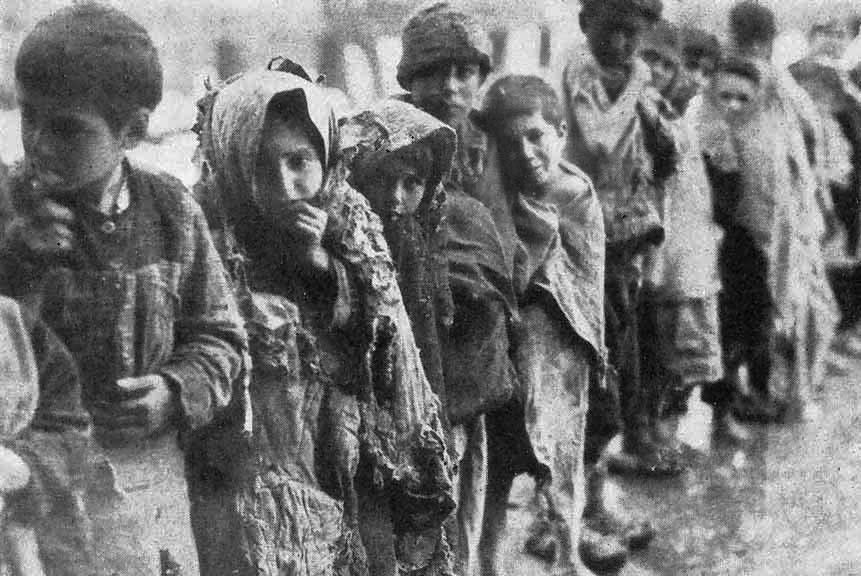
Terminology
Genocide is defined as the deliberate and systematic destruction of a racial, religious, political, or ethnic group. The word, from the Greek genos, meaning “race,” “nation,” or “tribe,” and the Latin cide, meaning “killing,” originated from the tragic events in the Middle East during the end of the Ottoman empire from 1910 to 1933, which called for a legal concept to describe the deliberate destruction of large groups.
Another term that should be analyzed is Holocaust. Holocaust is defined as the deliberate and systematic destruction by fire of a racial, religious, political, or ethnic group. The word derives from the Greek holos, meaning “whole” and kaustos, meaning “burnt”.
From 1843 to 1945, the Turks, Kurds, Arabs and Persians committed genocides against the Assyrian nation and other Christian peoples in Asia Minor [Middle East]. These international human rights violations were crimes against humanity and served as examples for future atrocities of this manner against the Jewish people in Europe. In these genocides, 750,000 indigenous Christian Assyrians living in their ancestral homelands (known today as the republics of Turkey, Syria, Iraq, and Iran), including 1½ million Christian Armenians and 1,000,000 Hellenes were burned, slaughtered, and shot systematically. Defenseless men, women, children, and the elderly became victims of these genocides.
As a result, there are cases that have caused international reprisals. Of particular interest are the allegations of Armenians, Assyrians and Greeks who lived in the Ottoman Empire. They now demand recognition of mass slaughter against them by the Ottoman government in the late 19th and early 20th century. Armenians also report the killing by the army of the Young Turks at the beginning of last century (1915), while Greeks of Asia Minor condemn such practices from 1915 until the Asia Minor Catastrophe of 1922.
So, let’s start with some of the most important genocides that took place during the beginning of the last centuries.
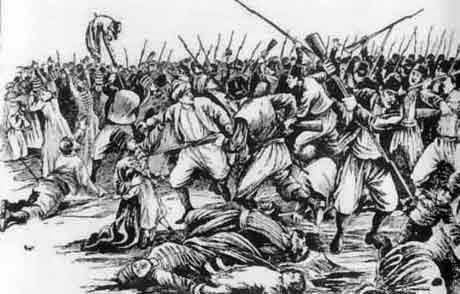
Armenian Genocide
The roots
The Armenian people have made their home in the Caucasus region of Eurasia for some 3,000 years. For some of that time, the kingdom of Armenia was an independent entity–at the beginning of the 4th century AD, for instance, it became the first nation in the world to make Christianity its official religion–but for the most part, control of the region shifted from one empire to another. During the 15th century, Armenia was absorbed into the mighty Ottoman Empire.
Armenia had come largely under Ottoman rule during the fifteenth and sixteenth centuries. The vast majority of Armenians, grouped together under the name Armenian millet (community) and led by their spiritual head, the Armenian Patriarch of Constantinoupolis, were concentrated in the eastern provinces of the Ottoman Empire (commonly referred to as Turkish Armenia or Western Armenia), although large communities were also found in the western provinces, as well as in the capital Constantinoupolis.
The massacres begin
The starting date is conventionally held to be 24 April 1915, the day Ottoman authorities rounded up and arrested some 250 Armenian intellectuals and community leaders in Constantinoupolis. The genocide was carried out during and after World War I and implemented in two phases: the wholesale killing of the able-bodied male population through massacre and subjection of army conscripts to forced labor, followed by the deportation of women, children, the elderly and infirm on death marches leading to the Syrian desert. Driven forward by military escorts, the deportees were deprived of food and water and subjected to periodic robbery, rape, and massacre.
At the same time, the Young Turks created a “Special Organization,” which in turn organized “killing squads” or “butcher battalions” to carry out, as one officer put it, “the liquidation of the Christian elements.” These killing squads were often made up of murderers and other ex-convicts. They drowned people in rivers, threw them off cliffs, crucified them and burned them alive. In short order, the Turkish countryside was littered with Armenian corpses.
Records show that during this “Turkification” campaign government squads also kidnapped children, converted them to Islam and gave them to Turkish families. In some places, they raped women and forced them to join Turkish “harems” or serve as slaves. Muslim families moved into the homes of deported Armenians and seized their property.
The total number of people killed as a result has been estimated at between 1 and 1.5 million. Other indigenous and Christian ethnic groups such as the Assyrians, the Greeks and other minorities were similarly targeted for extermination by the Ottoman government, and their treatment is considered by many historians to be part of the same genocidal policy. The majority of Armenian diaspora communities around the world came into being as a direct result of the genocide.
In 1922, when the genocide was over, there were just 388,000 Armenians remaining in the Ottoman Empire.
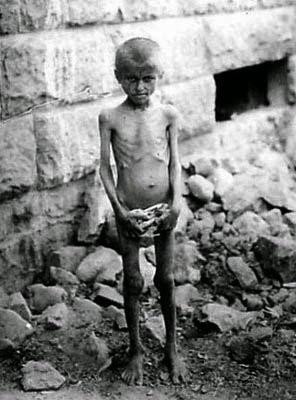
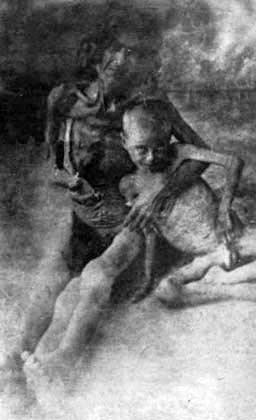
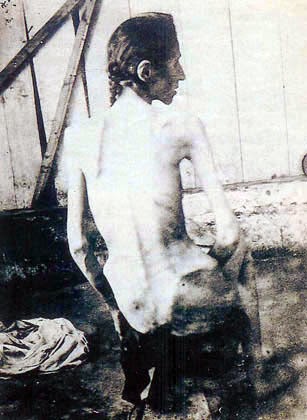
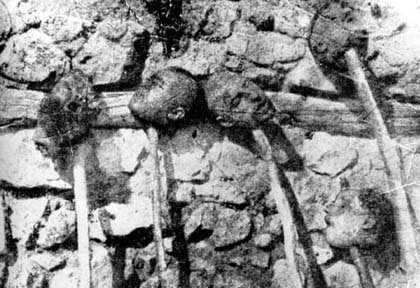
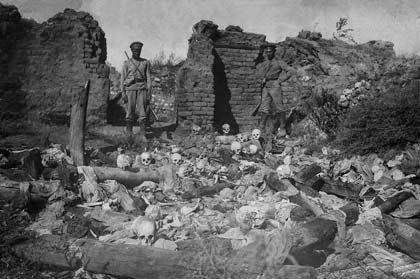
As a response to the continuing denial of the Armenian Genocide by the Turkish State, many activists among Armenian Diaspora communities have pushed for formal recognition of the Armenian genocide from various governments around the world. 22 countries and 42 U.S. states have adopted resolutions acknowledging the Armenian Genocide as a bona fide historical event.
On 4 March 2010, a US congressional panel narrowly voted that the incident was indeed genocide; within minutes the Turkish government issued a statement critical of «this resolution which accuses the Turkish nation of a crime it has not committed». The Armenian Assembly of America (AAA) and the single largest organisation with the AAA the Armenian National Committee of America (ANCA) have as their main lobbying agenda to press Congress and the President of the United States for an increase of economic aid for Armenia (already the second largest per capita after Israel) and the reduction of economic and military assistance for Turkey. The efforts also include reaffirmation of a genocide by Ottoman Turkey in 1915.
Despite his previous public recognition and support of Genocide bills, as well as the election campaign promises to formally recognize the Armenian Genocide, the U.S. President, Barack Obama, although repeating that his views on the issue have not changed, has thus far abstained from using the term «genocide». On 24 April commemoration speeches President Obama has yet referred to the Armenian Genocide only by the Armenian synonym Metz Eghern («Mec Eġeṙn»).
Armenians say they were the victims of the first genocide of the twentieth century. Most Turks say Armenians died during intercommunal fighting and during a wartime relocation necessitated by security concerns because the Armenians sympathized with and many fought on the side of the enemy. For genocide scholars, the claims of the Armenians have become incontrovertible historical fact.
Greek and Pontic Genocide
National Geographic 1922 The Greek Genocide — Smyrna Holocaust
The Greek genocide, part of which is known as the Pontic genocide, was the systematic ethnic cleansing of the Christian Ottoman Greek population from its historic homeland in Anatolia during World War I and its aftermath (1914–23). It was instigated by the government of the Ottoman Empire against the Greek population of the Empire and it included massacres, forced deportations involving death marches, summary expulsions, arbitrary execution, and the destruction of Christian Orthodox cultural, historical, and religious monuments. According to various sources, several hundred thousand Ottoman Greeks died during this period. Most of the refugees and survivors fled to Greece (amounting to over a quarter of the prior population of Greece), some, especially those in Eastern provinces, took refuge in the neighboring Russian Empire. Thus by the end of the 1919–22 Greco-Turkish War, most of the Greeks of Asia Minor had fled or been killed, those remaining were transferred to Greece under the terms of the later 1923 population exchange between Greece and Turkey, which formalized the exodus and barred the return of the refugees. Other ethnic groups were similarly attacked by the Ottoman Empire during this period, including Assyrians and Armenians, and some scholars and organizations have recognized these events as part of the same genocidal policy.
The Allies of World War I condemned the Ottoman government-sponsored massacres as crimes against humanity. More recently, the International Association of Genocide Scholars passed a resolution in 2007 recognising the Ottoman campaign against Christian minorities of the Empire, including the Greeks, as genocide. Some other organisations have also passed resolutions recognising the campaign as a genocide, as have the parliaments of Greece, Cyprus, Sweden, Armenia, and The Netherlands.
The Greek presence in Asia Minor has been dated to at least the time of Homer around 800 BCE. The geographer Strabo referred to Smyrna as the first Greek city in Asia Minor. Greeks referred to the Black Sea as the «Euxinos Pontos» or «hospitable sea» and starting in the eighth century BCE they began navigating its shores and settling along its coast. The most notable Greek cities of the Black Sea were Trebizond, Sampsounta, Sinope and Heraclea Pontica.
The month of September of 1922 brings with it the end of summer, the beginning of a new year on the Orthodox calendar, and the anniversaries of dates that have ravaged Hellenic civilization and culture. On September 14, we commemorate the Hellenic Genocide. We remember once again the Greeks of Asia Minor who were systematically murdered by the governments of the Young Turks and Mustafa Kemal Pasha.
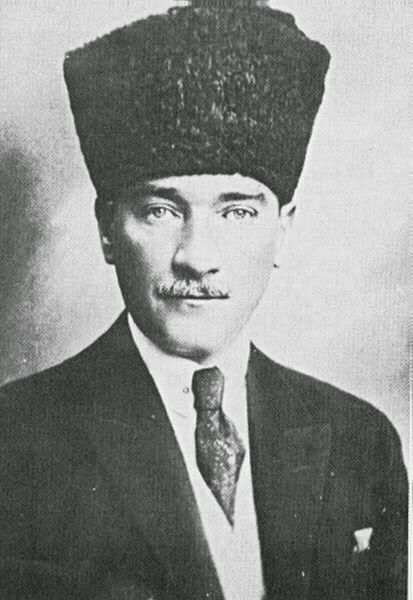 The roots
The roots
The destruction of Asia Minor Hellenism began much earlier, in 1071, when the Byzantine armies were defeated by the Seljuk Turks. In this historical event lies the origin of the Hellenic Holocaust, which continues up to the present day. In 1453, Constantinoupolis fell to the Turks. The great Constantinos Palaiologos led 5,000 brave Greek soldiers against 80,000 Ottoman Turkish soldiers. The fall of Constantinoupolis, and the fall of the Empire of Trebizond eight years later, extended the Hellenic Holocaust to all Hellenic regions.
The Ottoman Empire brought with it massacres, torture, slavery, the kidnapping of boys for the Janissaries, the enslavement of women into the harems, and intolerable political and economic pressure that resulted in the further decimation of Hellenism. For even when Hellenes were not massacred, the destruction of Hellenism occurred with the loss of national identity. Conversions to Islam and Turkification contributed to the nightmare of the loss of independence and national sovereignty.
Asia Minor Catastrophe
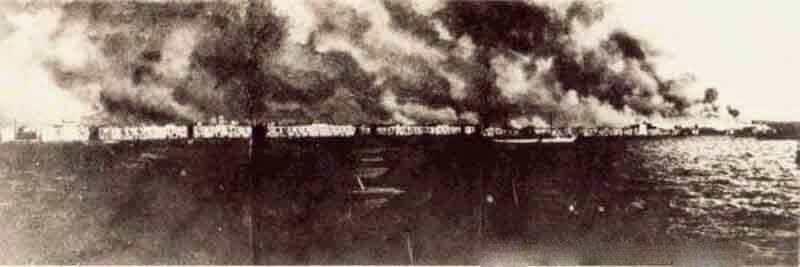
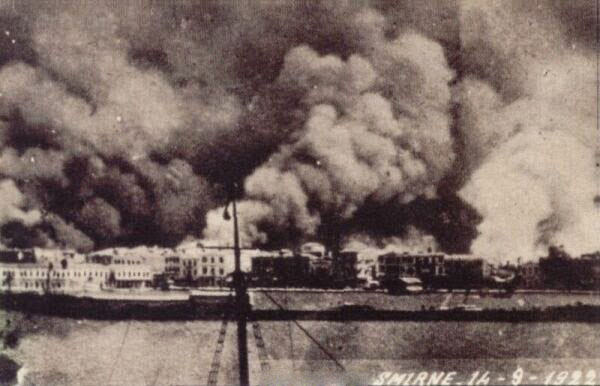
In May 1919, the armies of a a free and independent Greece entered the glorious and long suffering city of Smyrna. For a brief time it appeared that the extermination of the Hellenic race had ceased. During the First World War, the Young Turks began to murder the Hellenic populations in Asia Minor, along with the Armenians and the Assyrians.
Ultimately, Mustafa Kemal Pasha became an instrument of western imperialism and as such Turkish racism earned the unconditional assistance of the United States, Great Britain, France, and Italy. Kemal was aided by the western powers while the Greek Army in Asia Minor was cut off by an embargo imposed by the western powers. In September 1922, beautiful Smyrna was conquered by the Kemalists and burned. Over 100,000 Greeks and 30,000 Armenians were slaughtered.
The decimation of Hellenism continued when the west supported Kemal’s plan to ethnically cleanse Asia Minor and Eastern Thraki of well over 1,000,000 Hellenes. In this day and age, we are inundated with stories of ethnic cleansing throughout the world, but there is still no recognition of the horrors that have been perpetrated against Hellenism.
Over 1,000,000 Hellenes were forced to abandon the land and homes where their ancestors and descendants had lived for over 3,000 years. This ethnic cleansing and Genocide was supported by the «civilized» powers in the west and legitimized by the Treaty of Lausanne. Today the world commemorates Aushwitz and the crimes of Stalin, but there are no memorials for the dead of Smyrna and Pontus in those ancient Hellenic lands.
In Smyrna, Greek Army officers serving with NATO were assaulted and their wives violated. Throughout these terrorist attacks, the police did not interfere. On September 6 the end came for Hellenism in Constantinoupolis and Imbros. In the 1960’s, the Turkish authorities proceeded to finish the job by ethnically cleansing the last remnants of Hellenism.
During these attacks in Constantinoupolis, Imbros, and Smyrna, there were absolutely no condemnations, protests, or sanctions coming from Washington (that universal protector of «human rights» and «democracy»). Following the September 6 pogroms, Secretary of State John Foster Dulles wrote identical letters to Greek Prime Minister Alexander Papagos and Turkish Prime Minister Adnan Menderes urging the «allies» to consider NATO. There was no sympathy for Greece expressed, nor was there any condemnation of Turkey’s blatant aggression.

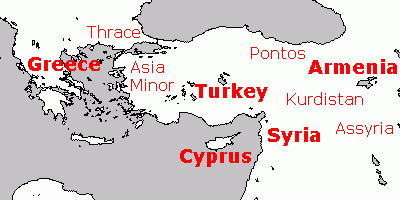
Pontic Genocide
The opening bell of the genocide came with the order in 1914 for all Pontic men between the ages of 18 and 50 to report for military duty. Those who «refused» or «failed» to appear, the order provided, were to be summarily shot. The immediate result of this firman (decree) was the murder of thousands of the more prominent Pontians, whose name appeared on lists of «undesirables» already prepared by the Young Turk regime.
Thousands ended up in the notorious Labor Battalions (amele taburu). In a precursor of what was to become a favorite practice in Hitler’s extermination camps, Pontic men were driven from their homes into the wilderness to perform hard labor and expire from exhaustion, thirst, and disease. German advisors of the Turkish regime (what a surprise!) suggested that Pontic populations be forced into internal exile. This «advise» led directly to the emptying of hundreds of Pontic villages and the forced march of women, children, and old people to nowhere. The details of this systematic slaughter of the Pontians by the Turks were dutifully recorded by both German and Austrian diplomats.
The Pontians, unlike Greeks elsewhere in Asia Minor, did try to organize armed resistance against their butchers. Pontic guerrilla bands had appeared in the mountains of Santa as early as 1916. Brave leaders, like Capitan Stylianos Kosmidis, even hoisted the flag of independent Pontus in the hope of help from Greece and Russia (which never arrived). But the struggle was unequal. The Turkish army, assisted by the blood-thirsty Tsets, cuthroats of mostly Kurdish extraction, attacked and destroyed undefended Pontic villages in revenge.
On May 19, 1919, Mustafa Kemal himself disembarked at Samsous to begin organizing the final phase of the Pontic genocide. Assisted by his German advisers, and surrounded by his own band of killers — monsters like Topal Osman, Refet Bey, Ismet Inonu, and Talaat Pasha — the founder of «modern» Turkey applied himself to the destruction of the Pontic Greeks. With the Greek army engaged in Anatolia, a new wave of deportations, mass killings, and «preventative» executions destroyed the remnants of Pontic Hellenism. The plan worked with deadly precision. In the Amasia province alone, with a pre-war population of some 180,000, records show a final tally of 134,000 people liquidated.
There are various estimates of the toll. Records kept mainly by priests show a minimum 350,000 Pontic Greeks exterminated through systematic slaughter by Turkish troops and Kurdish para-militaries. Other estimates, including those of foreign missionaries, spoke of 500,000 deaths, most through deportation and forced marches into the Anatolian desert interior. Thriving Greek cities like Bafra, Samsous, Kerasous, and Trapezous, at the heart of Pontic Hellenism on the coast of the Black Sea, endured recurring massacres and deportations that eventually destroyed their Greek population.
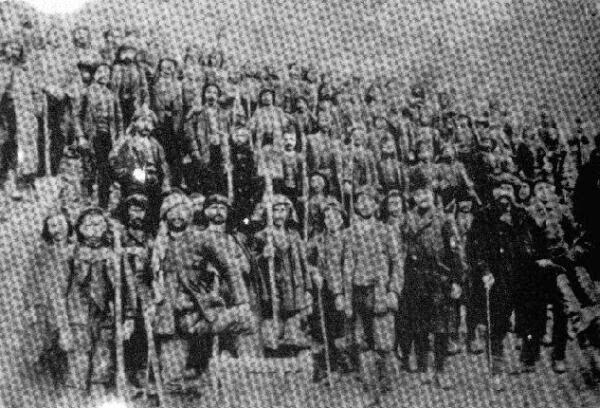
Presence and recognition
Hellenism is today being eradicated in Cyprus. Over 200,000 Greeks have been ethnically cleansed in the occupied territories. In 1996, Turkish death squads murdered Cypriots Tasos Isaac and Solomos Solomou. As in Asia Minor in 1922, and Constantinoupolis in 1955, there is not a single protest emanating from the «civilized powers.»
Black September, a month to commemorate and recall our losses, and to reevaluate where Hellenism stands today in Cyprus, Macedonia, the Aegean Sea, and Northern Epirus. The losses of Hellenism have been numerous in terms of lives lost, and in terms of territory that has been conquered. Let us remember, commemorate, and mourn all that has been lost in Asia Minor and Constantinoupolis, remember Smyrna and Pontus, and the victims of the Hellenic Genocide.
The Greek Parliament has passed two laws on the fate of the Ottoman Greeks; the first in 1994 and the second in 1998. The decrees were published in the Greek Government Gazette on 8 March 1994 and 13 October 1998 respectively. The 1994 decree affirmed the genocide in the Pontus region of Asia Minor and designated 19 May a day of commemoration, while the 1998 decree affirmed the genocide of Greeks in Asia Minor as a whole and designated 14 September a day of commemoration. These laws were signed by the President of Greece but were not immediately ratified after political interventions.
In response to the 1998 law, the Turkish government released a statement which claimed that describing the events as genocide was «without any historical basis».
On 11 March 2010, Sweden’s Riksdag passed a motion recognising «as an act of genocide the killing of Armenians, Assyrians/Syriacs/Chaldeans and Pontiac (sic) Greeks in 1915».
On 14 May 2013, the government of New South Wales was submitted a genocide recognition motion by Fred Nile of the Christian Democratic Party, and was later passed making it the fourth political entity to recognise the genocide.
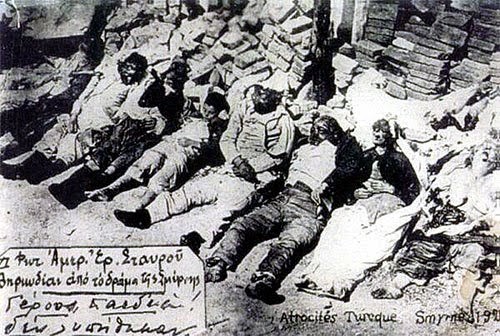
The Assyrian Genocide
The Assyrian people have been repeatedly victimized by genocidal assaults over the past century. The Assyrian genocide refers to the mass slaughter of the Assyrian population of the Ottoman Empire during the 1890s and the First World War, in conjunction with the Armenian and Greek genocides.
The Assyrian civilian population of upper Mesopotamia (the Tur Abdin region, the Hakkâri, Van, and Siirt provinces of present-day southeastern Turkey, and the Urmia region of northwestern Iran) was forcibly relocated and massacred by the Muslim Ottoman (Turkish) army, together with other armed and allied Muslim peoples, including Kurds, Chechens and Circassians, between 1914 and 1920, with further attacks on unarmed fleeing civilians conducted by local Arab militias.
Background
The Assyrian population in the Ottoman Empire numbered about one million at the turn of the twentieth century and was largely concentrated in what is now Iran, Iraq and Turkey. However, researchers such as David Gaunt have noted that the Assyrian population was around 600,000 prior to World War I. There were also hundreds of thousands of Maronite Christians in Lebanon, with some Assyrian heritage but which are less often called Assyrians. There were significantly larger communities located in the regions near Lake Urmia in Persia, Lake Van (specifically the Hakkari region) and Mesopotamia, as well as the eastern Ottoman vilayets of Diyarbekir, Erzurum and Bitlis.
Like other Christians residing in the empire, they were treated as second-class citizens and denied public positions of power. Violence directed against them prior to the First World War was not new. Many Assyrians were subjected to Kurdish brigandage and even outright massacre and forced conversion to Islam, as was the case of the Assyrians of Hakkari during the massacres of Badr Khan in the 1840s and the Massacres of Diyarbakır during the 1895–96 Hamidian Massacres. The Hamidiye received assurances from the Ottoman Sultan that they could kill Assyrians and Armenians with impunity, and were particularly active in Urhoy and Diyarbakir.
World War I and the massacres
The Ottoman Empire began massacring Assyrians in the nineteenth century, a time of friendly relations between the Ottomans and the British, who were defending the Ottomans from the Russian Empire’s efforts to include under its protection the communities of Ottoman Orthodox Christians. In October 1914, the Ottoman Empire began deporting and massacring Assyrians and Armenians in Van. After attacking Russian cities and declaring war on Britain and France, the Empire declared a holy war on Christians.
Organized as the Committee of Union and Progress (CUP), the «Young Turks» staged a successful coup in 1913, thereby establishing a military dictatorship on the eve of World War I. They initiated a national project of «Turkey for the Turks,» whereby they sought to forge a homogenous nation state through the deliberate removal of all minorities. Soon after the Ottoman Empire entered World War I in November 1914, the CUP ruthlessly began its genocidal project.
Massacres, rapes, plundering, cultural desecrations, and forced deportations were all endemic. Around 750,000 Assyrians died during the genocide, amounting to nearly three quarters of its prewar population. The rest were dispersed elsewhere, mostly in the Middle East.
Unfortunately, the persecution of Assyrians did not end with the collapse of the Ottoman Empire. From August 8-11, 1933, in the newly established state of Iraq, Assyrian villagers in the northern Iraqi town of Simele were brutally murdered. Some 3,000 men, women, and children were killed by Iraqi soldiers and Kurdish irregulars.
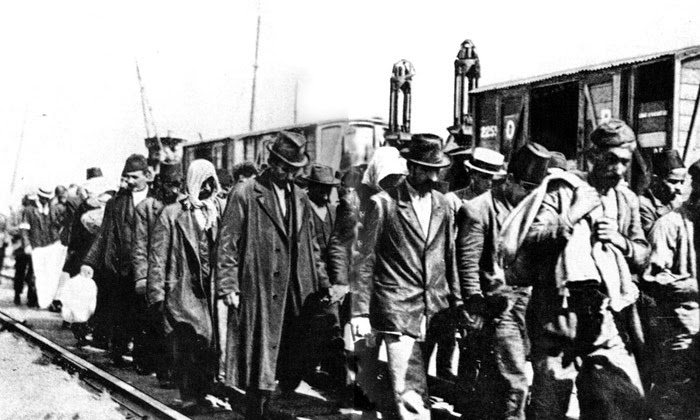
Recognition
On 11 March 2010, the Genocide of the Assyrians was officially recognized by the Riksdag of Sweden, alongside that of the Armenians and Pontic Greeks. The Assyrian genocide is recognised by the New South Wales (NSW) Local Government in Australia, by the South Australia State Parliament and by the last three governors of the state of New York.
This is in contrast to the Armenian Genocide, which has also been recognized by other countries and international organizations. Assyrian historians attribute the limited recognition to the smaller number of Assyrian survivors, whose leader Mar Shimun XIX Benjamin was killed in 1918. For example, there are one million Armenians living in the United States alone, but even they were unable to persuade Congress to pass a United States resolution on Armenian genocide.
In addition, the widespread massacres of all Ottoman Christians in Asia Minor is sometimes referred to by Armenian authors as an «Armenian Genocide».
In December 2007, the International Association of Genocide Scholars, the world’s leading genocide scholars organization, overwhelmingly passed a resolution officially recognizing the Assyrian genocide, along with the genocide against Ottoman Greeks. The vote in favor was 83%. The Interparliamentary Assembly on Orthodoxy (I.A.O.), passed a resolution officially recognizing the Assyrian genocide on June 2011.
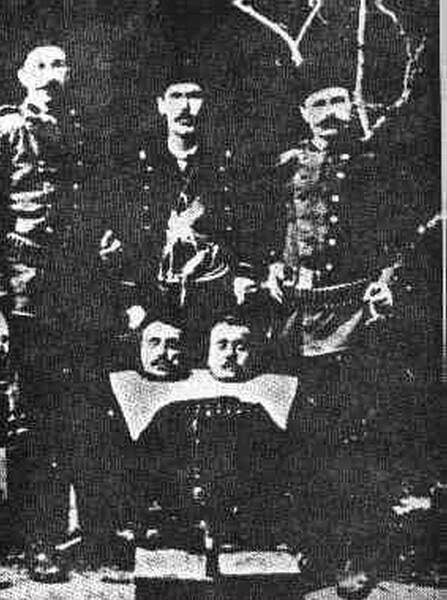
The Holocaust
The Holocaust was the systematic, bureaucratic annihilation of six million Jews by the Nazi regime and their collaborators as a central act of state during World War II. Killings took place throughout the German Reich and German-occupied territories.
The beginning
In 1933, the Jewish population of Europe stood at over nine million. Most European Jews lived in countries that Nazi Germany would occupy or influence during World War II.
On January 30, 1933, Adolf Hitler was named Chancellor, the most powerful position in the German government, by the aged President Hindenburg who hoped Hitler could lead the nation out of its grave political and economic crisis. Hitler was the leader of the right-wing National Socialist German Workers Party (called the Nazi Party for short).
Once in power, Hitler moved quickly to end German democracy. In 1933, new German laws forced Jews to quit their civil service jobs, university and law court positions, and other areas of public life. In April 1933, a boycott of Jewish businesses was instituted. In 1935, laws proclaimed at Nuremberg stripped German Jews of their citizenship even though they retained limited rights.
These «Nuremberg Laws» defined Jews not by their religion or by how they wanted to identify themselves but by the blood of their grandparents. Between 1937 and 1939, new anti-Jewish regulations segregated Jews further and made daily life very difficult for them: Jews could not attend public schools, go to theaters, cinemas, or vacation resorts, or reside, or even walk, in certain sections of German cities.
World War II
During this time, concentration camps were also established, and Jews and Romani were pulled from the ghettos and placed into the concentration camps, where they were forced into slave labor until disease, starvation, or exhaustion killed them.
As the Nazis continued to conquer new areas of Europe, new ghettos and concentration camps were set up. Additionally, death squads began to execute Jews and others in mass shootings, burying them in mass graves throughout the continent.

The Final Solution
The Final Solution was Nazi Germany’s plan during World War II to systematically empty Nazi-occupied Europe of its Jewish population, through genocide.
By 1945, the Germans and their collaborators killed nearly two out of every three European Jews as part of the «Final Solution,» the Nazi policy to murder the Jews of Europe. Although Jews, whom the Nazis deemed a priority danger to Germany, were the primary victims of Nazi racism, other victims included some 200,000 Roma (Gypsies). At least 200,000 mentally or physically disabled patients, mainly Germans, living in institutional settings, were murdered in the so-called Euthanasia Program.
In May 1945, Nazi Germany collapsed, the S.S. guards fled, and the camps ceased to exist as extermination, forced labor, or concentration camps. Between 1948 and 1951, almost 700,000 Jews emigrated to Israel, including 136,000 Jewish displaced persons from Europe. Other Jewish DPs emigrated to the United States and other nations. The last DP camp closed in 1957.
Nuremberg trials
The Nuremberg trials were a series of military tribunals, held by the Allied forces after World War II, most notable for the prosecution of prominent members of the political, military, and economic leadership of Nazi Germany. The trials were held in the city of Nuremberg, Germany.
The first, and best known of these trials was the trial of the major war criminals before the International Military Tribunal (IMT). Held between 20 November 1945 and 1 October 1946, the Tribunal was given the task of trying 23 of the most important political and military leaders of the Third Reich, though one of the defendants, Martin Bormann, was tried in absentia, while another, Robert Ley, committed suicide within a week of the trial’s commencement. Not included were Adolf Hitler, Heinrich Himmler, and Joseph Goebbels, all of whom had committed suicide several months before the indictment was signed.
The second set of trials of lesser war criminals was conducted under Control Council Law No. 10 at the U.S. Nuremberg Military Tribunals (NMT); among these included the Doctors’ Trial and the Judges’ Trial.
Conclusion
The very difference between Germany and Turkey is that the Germans actually accepted their crimes against humanity as well as the holocaust, in contrary Turkey is not accepting the crimes against humanity and the genocides that they committed, even after 100 years.
Some Turkish and Armenian historians have suggested recently that it is time to «step back from the was-it-genocide-or-not dialogue of the deaf, which only leads to mutual recrimination» and instead concentrate on empirically grounded historical research that seeks a common pool of firm knowledge.
However, I believe that people must know about history. This concerns not only their national history, but the whole world’s history, since everyone of us is a part of it. Knowing your past is not only a kind of justice for the people who have been killed; it’s also a way to know how to make your future better.
Of course, these are not the only genocides and mass killings that need to be known, remembered and recognised. Only some of the other mass killings are The Killing Fields, Holodomor, Native American genocide and Rwandan genocide.
Only time will tell whether it will be possible to rescue history from nationalists who have plundered history to serve their own political ends.
After all, the recognition of these crimes is only a first good step someone has to take, because, as Edmund Burke has once said, «those who don’t know history are doomed to repeat it».
